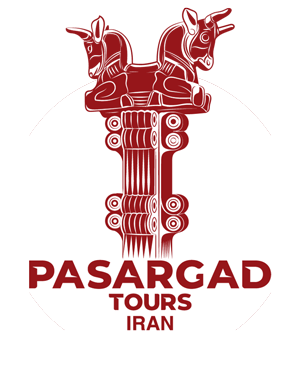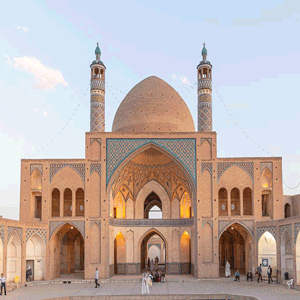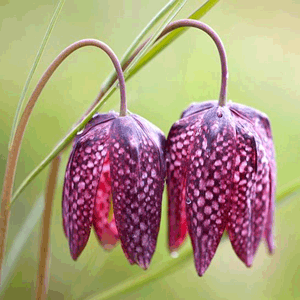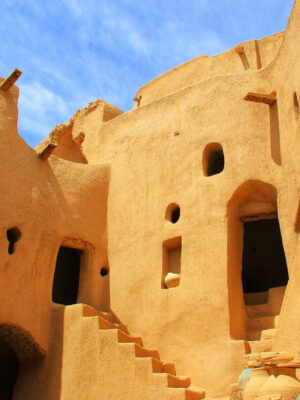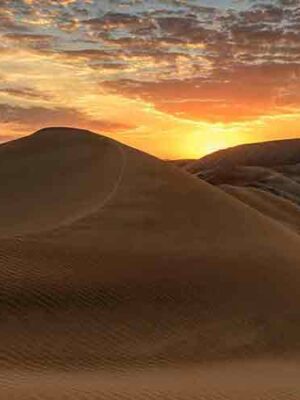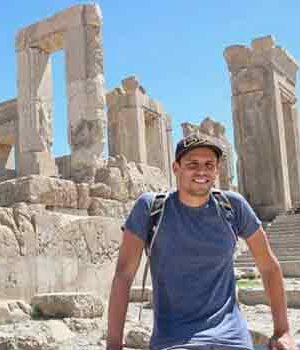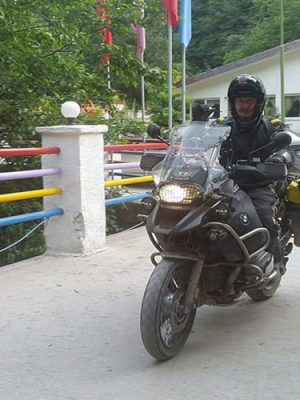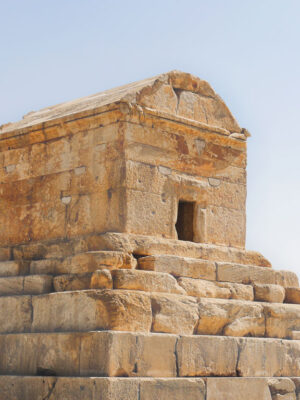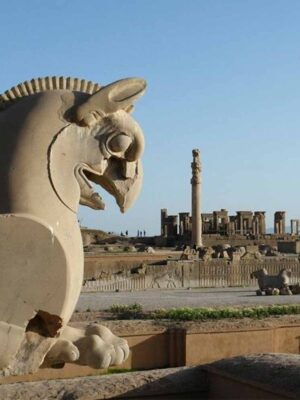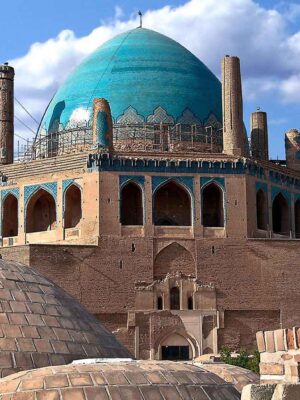Imam Reza Shrine
Appreciating the cultural heritage of any country is hardly possible without having insight into its religious identity. Concepts of morality and social identity or even beauty are closely related to the religious beliefs of a society. Such a phenomenon of all-encompassing belief is distinctly observable in Muslim countries. Yet, it doesn’t mean that you have to become an Islamic scholar to understand and appreciate your visit. You just need to experience the attitude of the masses towards what they consider holy. Above all, allow your empathy to connect you with a different kind of life and a different society. It is partially for this reason that we highly recommend visiting Imam Reza Shrine, the heart of Shia Iran during your stay.
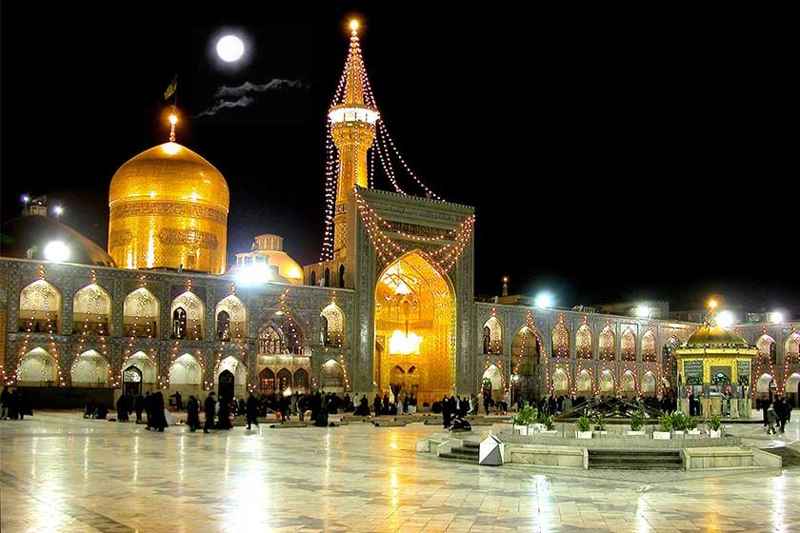
Imam Reza Shrine at night
Imam Reza Shrine, also known as Imam Reza Sanctuary, is amongst the largest mosques in the world. Covering an area of about a million square meters, it is a complex containing the mausoleum of Imam Reza, Goharshad Mosque, a museum, a library, four seminaries, prayer halls, and more. The complex attracts a growing number of visitors and pilgrims from Iran and other countries, roughly about 28 million individuals per year.
Early History of the Imam Reza Shrine
This place used to be a fortress and a royal residence before Islam, located in a village called Sanabad. It served as a palace for soldiers and government officials in charge of guarding the roads of Neishaboor, Sarakhs, Toos, and Radkan. Even the original inner building was a Zoroastrian temple.
Long after the conquest of Iran by Islam, the palace changes its name to Dar-ul-Imarah. Later on, in 809 the temple became the burial ground of Harun al-Rashid the Abbasid Caliph. The place was renamed Haruniyyeh and the temple was demolished by the order of al-Ma’mun (Harun al-Rashid son and heir). In 818 A.D. Caliph al-Ma’mun murdered Ali al-Reza, the 8th Imam of Shia Muslims. To appease the unrest caused by the murder of a direct descendant of prophet Muhamad, he then ordered the burial of the Martyred Imam beside the grave of his father Harun al-Rashid. Therefore, the name Harrunieh was changed into Imam Reza Shrine. Similarly, the name of the village was changed to Mashhad: A shortened version of Mashhad al-Reza which means “the place of martyrdom of Reza”.
A Thousand Years of Transformation
A few years after the martyrdom of Ali al-Reza, a dome was built above his shrine. After that, the flock of pilgrims helped improve the economic growth of Mashhad. Bazaars and resting places grew around the shrine and the population began to flourish around the holy site. Sensing threatened by such growth, Sebuktagin the Ghaznavid Sultan banned the pilgrimage and his soldiers devastated the city. But a few years later in 1009, his son Mahmud of Ghazni took it upon himself to rebuild and expand the shrine.
Golden Miracles
In 1086 Sultan Sanjar commissioned the renovation and expansion of the Imam Reza shrine as a tribute to the miraculous healing of his son during his visit. The dome was first ornamented with golden textiles as requested by a female aristocrat. The textile, later on, became famous as Seljuk textiles.
The holy shrine survived the Mongol invasion and even expanded further when the Mongol ruler of Iran converted to Shia Islam. Later on, in 1418, Goharshad, the wife empress of Sharukh Mirza directed the construction of a Mosque beside the shrine known today as Goharshad Mosque.
Great Expansion
During the Safavid era (1501-1736), the complex that had suffered damages from invading Uzbeks underwent renovations and improvement. After declaring the Twelver Shi’ite sect as the state religion, Mashhad and the Shrine grew in importance. The site greatly expanded and even received patronage from Indian rulers.
The ensuing rulers, Afsharids (1736-1796), Qajars (1789-1925), and Pahlavids each helped expand and improve the decoration of the holy site: Some through building courtyards and porches and some by adding gold-coated bricks and ornamenting the interior with mirrors and paintings.
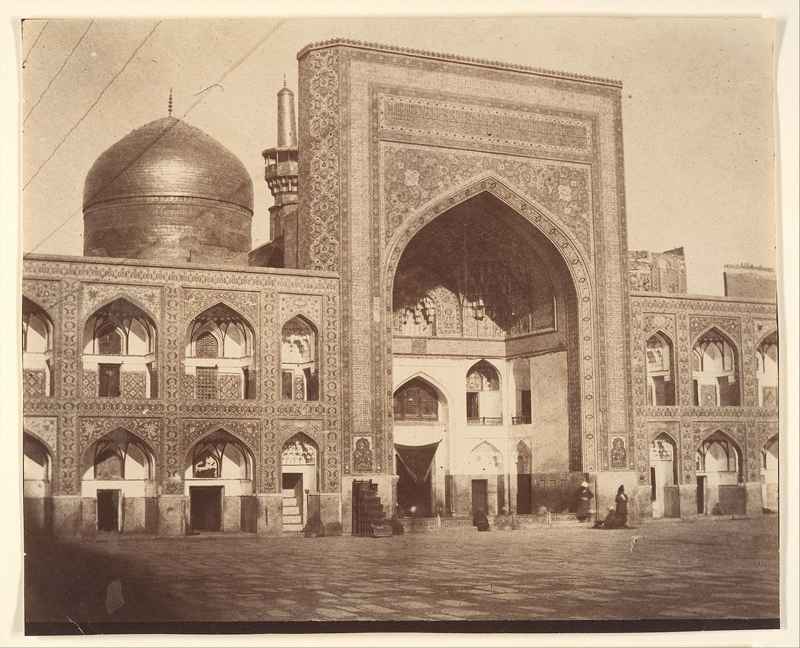
Main Gate of Imam Reza Shrine in the 1850s
Expansion of the Shrine in the Islamic Republic
After a successful revolution and the establishment of the Islamic Republic of Iran, the revolutionary leaders took the task of expansion and renovation of Imam Reza Sanctuary more seriously than their predecessors. The area of the Imam Reza Shrine grew from 12 acres to almost 100 acres. Several development projects helped modernize the facilities and infrastructure while saving the historic identity of the building and preserving the historic heritage.
Most Notable Places in Imam Reza Sanctuary
Being a complex of Mosques, courtyards, and halls, There are several distinctive buildings in Imam Reza Sanctuary that are most notable for their outstanding features. Therefore, a brief introduction to these buildings would be helpful to the visitor. Yet, one has to bear in mind these short descriptions are far from comparable to an actual visit assisted by a professional guide.
Tomb of Ali al-Reza
The heart of the complex, beneath the golden dome, is the tomb of Ali al-Reza. The actual shrine, built over the burial ground is located in this section. Documented Islamic scriptures from the prophet Mohammed and his descendants’ (Hadiths) cover the walls of this section. In addition, the quranic verses of Sura al Jumaah, inscribed by Reza Abbasi – a famous Safavid Calligraphist – encircle the tomb. It is where the religious fervor of the pilgrims reaches its highest. As they encircle the tomb, they ask for their salvation, healing, and relief from their worldly troubles. Above all, they seek the intercession of Imam for god’s mercy upon their immortal souls.
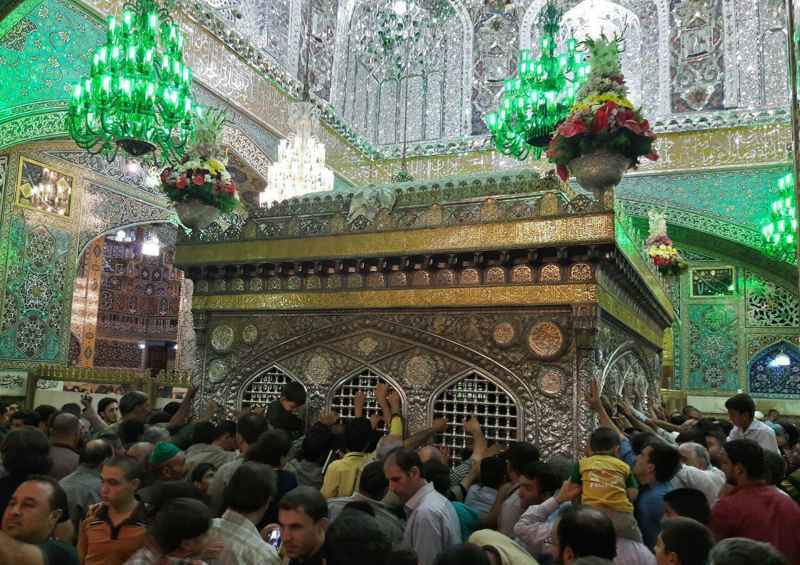
Tomb of Ali al-Reza Encircled by Pilgrims
Courtyards
There are seven different courtyards around the burial site of Imam Reza. These courtyards are essentially open spaces for the large crowd of people who come to visit. Similarly, they serve as extensions to mosques in public prayers. Each of these courtyards (called Sahn in Farsi), has its unique design and is surrounded by balconies. They also contain fountains for Muslims to make ablution, a type of ritual purification with water. These courtyards cover more than 30 acres of Imam Reza Sanctuary
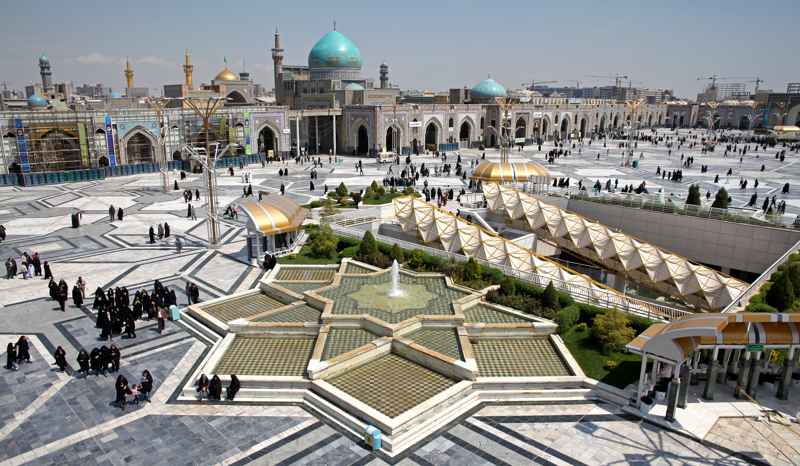
Aerial View of The Razavi Grand Courtyard
Halls
4 Halls (Called Bast) and 21 inner halls (Called Riwaq) separate Courtyards from the burial chamber of Imam Reza. The 4 Halls that separate and guard the inner sanctum against the outside, are therefore named after great Muslim scholars, an allusion to their role as the guardians of the faith.
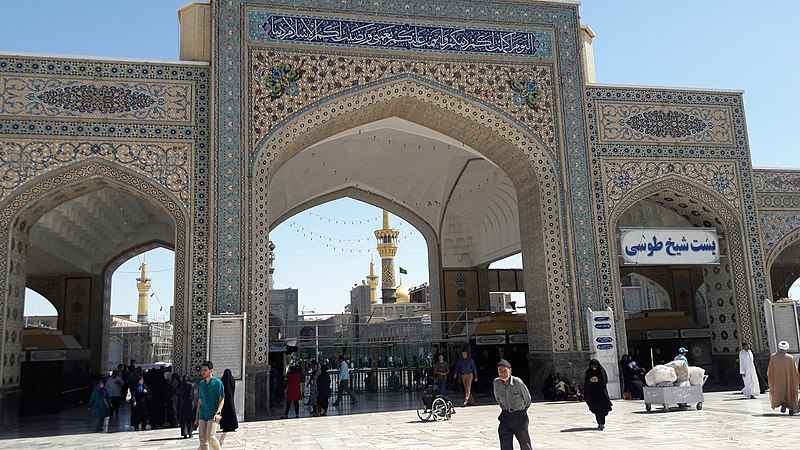
Bast Shaykh Toosi – Leading to the Central Library
Goharshad Mosque
An integral part of Imam Reza Sanctuary, It is not only one of the greatest mosques ever built in Iran but is also the most visited. The beautiful design, the exquisite ornamentation, and textile work make it an architectural wonder. Famous 15th-century Iranian architect Ghavameddin Shirazi oversaw the construction of the mosque, incorporating the mastery of masons and textile workers of Shiraz and Isfahan.
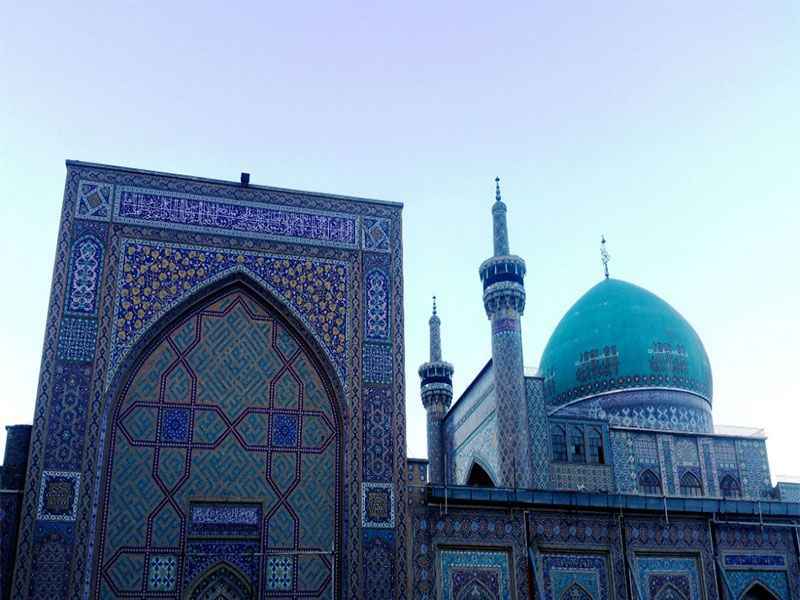
Exterior View of Goharshad Mosque
Construction of the mosque and its courtyard took 12 years. Yet maintaining and renovating such a marvelous structure covering an area of 9400 m2 proved to be a never-ending task. Nevertheless, generations of artists took it upon themselves to preserve the beauty and spirit of holiness throughout the centuries. Looking at the main portal and the arches within arches crafted in the ceiling justifies such an effort: Such holiness embodied within such beauty deserves as much attention if not more.
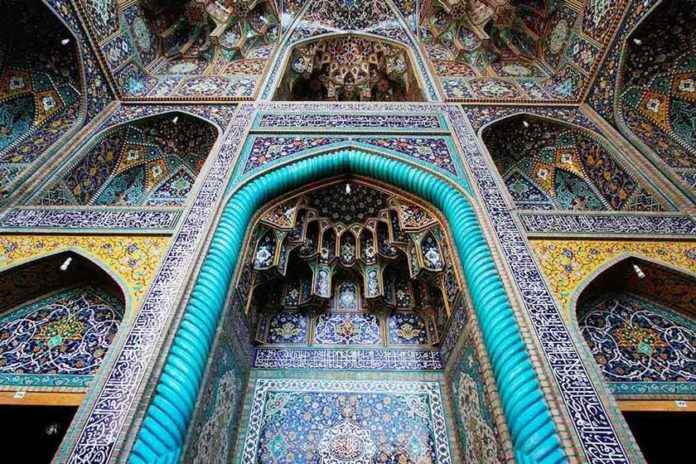
Goharshad Mosque – Abbasid Ivan in Atiq yard
Museums
There are four museums within the complex of Imam Reza Sanctuary. each containing a wealth of artifacts of historical value and importance. The main museum that houses the original tombstone of Imam Reza, is one of the richest museums in the country. For instance, it contains a large collection of artifacts from ancient coins and medallions to guns and even watches.
The second, called Quran Museum contains ancient handwritten copies of the Quran along with a myriad of ancient tools of writing. Similarly, it houses a vast collection of religious scriptures, flags, and paintings.
The third, built on three separate floors is the Carpet Museum. It exhibits a large collection of carpets from different parts of the country, woven with different technics.
The fourth museum used to be a public bath. It is repurposed as an anthropology museum that exhibits the old bathing accessories and venues, paintings, and artifacts.
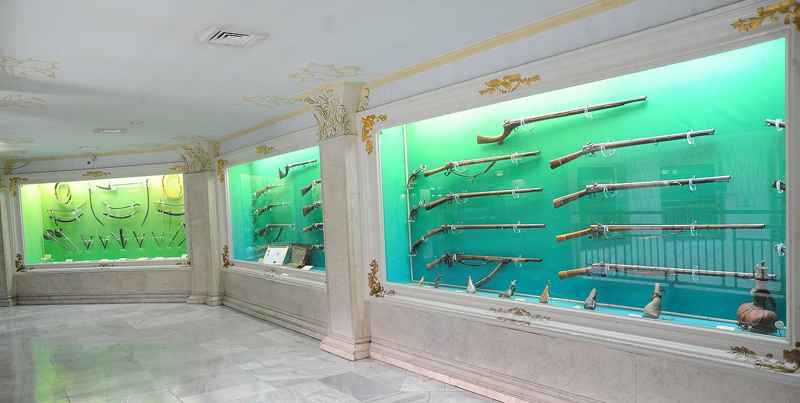
Imam Reza Shrine – Main museum – Collection of Swords, Knives, and Guns
Best Time to Visit
The best time for visiting Imam Reza Sanctuary would be the Nowruz holidays. In addition, during religious ceremonies like Ashura, or during Ramadan, the cultural atmosphere could be better experienced. we have reviewed only a very small part of the history and significance of this sanctuary. In conclusion, visiting Imam Reza Shrine will change your perspective about contemporary Iran and its culture. For reservations and more information about our tours, contact us at Pasargad Tours.
Imam Reza Shrine
Appreciating the cultural heritage of any country is hardly possible without having insight into its religious identity. Concepts of morality and social identity or even beauty are closely related to the religious beliefs of a society. Such a phenomenon of all-encompassing belief is distinctly observable in Muslim countries. Yet, it doesn’t mean that you have to become an Islamic scholar to understand and appreciate your visit. You just need to experience the attitude of the masses towards what they consider holy. Above all, allow your empathy to connect you with a different kind of life and a different society. It is partially for this reason that we highly recommend visiting Imam Reza Shrine, the heart of Shia Iran during your stay.

Imam Reza Shrine at night
Imam Reza Shrine, also known as Imam Reza Sanctuary, is amongst the largest mosques in the world. Covering an area of about a million square meters, it is a complex containing the mausoleum of Imam Reza, Goharshad Mosque, a museum, a library, four seminaries, prayer halls, and more. The complex attracts a growing number of visitors and pilgrims from Iran and other countries, roughly about 28 million individuals per year.
Early History of the Imam Reza Shrine
This place used to be a fortress and a royal residence before Islam, located in a village called Sanabad. It served as a palace for soldiers and government officials in charge of guarding the roads of Neishaboor, Sarakhs, Toos, and Radkan. Even the original inner building was a Zoroastrian temple.
Long after the conquest of Iran by Islam, the palace changes its name to Dar-ul-Imarah. Later on, in 809 the temple became the burial ground of Harun al-Rashid the Abbasid Caliph. The place was renamed Haruniyyeh and the temple was demolished by the order of al-Ma’mun (Harun al-Rashid son and heir). In 818 A.D. Caliph al-Ma’mun murdered Ali al-Reza, the 8th Imam of Shia Muslims. To appease the unrest caused by the murder of a direct descendant of prophet Muhamad, he then ordered the burial of the Martyred Imam beside the grave of his father Harun al-Rashid. Therefore, the name Harrunieh was changed into Imam Reza Shrine. Similarly, the name of the village was changed to Mashhad: A shortened version of Mashhad al-Reza which means “the place of martyrdom of Reza”.
A Thousand Years of Transformation
A few years after the martyrdom of Ali al-Reza, a dome was built above his shrine. After that, the flock of pilgrims helped improve the economic growth of Mashhad. Bazaars and resting places grew around the shrine and the population began to flourish around the holy site. Sensing threatened by such growth, Sebuktagin the Ghaznavid Sultan banned the pilgrimage and his soldiers devastated the city. But a few years later in 1009, his son Mahmud of Ghazni took it upon himself to rebuild and expand the shrine.
Golden Miracles
In 1086 Sultan Sanjar commissioned the renovation and expansion of the Imam Reza shrine as a tribute to the miraculous healing of his son during his visit. The dome was first ornamented with golden textiles as requested by a female aristocrat. The textile, later on, became famous as Seljuk textiles.
The holy shrine survived the Mongol invasion and even expanded further when the Mongol ruler of Iran converted to Shia Islam. Later on, in 1418, Goharshad, the wife empress of Sharukh Mirza directed the construction of a Mosque beside the shrine known today as Goharshad Mosque.
Great Expansion
During the Safavid era (1501-1736), the complex that had suffered damages from invading Uzbeks underwent renovations and improvement. After declaring the Twelver Shi’ite sect as the state religion, Mashhad and the Shrine grew in importance. The site greatly expanded and even received patronage from Indian rulers.
The ensuing rulers, Afsharids (1736-1796), Qajars (1789-1925), and Pahlavids each helped expand and improve the decoration of the holy site: Some through building courtyards and porches and some by adding gold-coated bricks and ornamenting the interior with mirrors and paintings.

Main Gate of Imam Reza Shrine in the 1850s
Expansion of the Shrine in the Islamic Republic
After a successful revolution and the establishment of the Islamic Republic of Iran, the revolutionary leaders took the task of expansion and renovation of Imam Reza Sanctuary more seriously than their predecessors. The area of the Imam Reza Shrine grew from 12 acres to almost 100 acres. Several development projects helped modernize the facilities and infrastructure while saving the historic identity of the building and preserving the historic heritage.
Most Notable Places in Imam Reza Sanctuary
Being a complex of Mosques, courtyards, and halls, There are several distinctive buildings in Imam Reza Sanctuary that are most notable for their outstanding features. Therefore, a brief introduction to these buildings would be helpful to the visitor. Yet, one has to bear in mind these short descriptions are far from comparable to an actual visit assisted by a professional guide.
Tomb of Ali al-Reza
The heart of the complex, beneath the golden dome, is the tomb of Ali al-Reza. The actual shrine, built over the burial ground is located in this section. Documented Islamic scriptures from the prophet Mohammed and his descendants’ (Hadiths) cover the walls of this section. In addition, the quranic verses of Sura al Jumaah, inscribed by Reza Abbasi – a famous Safavid Calligraphist – encircle the tomb. It is where the religious fervor of the pilgrims reaches its highest. As they encircle the tomb, they ask for their salvation, healing, and relief from their worldly troubles. Above all, they seek the intercession of Imam for god’s mercy upon their immortal souls.

Tomb of Ali al-Reza Encircled by Pilgrims
Courtyards
There are seven different courtyards around the burial site of Imam Reza. These courtyards are essentially open spaces for the large crowd of people who come to visit. Similarly, they serve as extensions to mosques in public prayers. Each of these courtyards (called Sahn in Farsi), has its unique design and is surrounded by balconies. They also contain fountains for Muslims to make ablution, a type of ritual purification with water. These courtyards cover more than 30 acres of Imam Reza Sanctuary

Aerial View of The Razavi Grand Courtyard
Halls
4 Halls (Called Bast) and 21 inner halls (Called Riwaq) separate Courtyards from the burial chamber of Imam Reza. The 4 Halls that separate and guard the inner sanctum against the outside, are therefore named after great Muslim scholars, an allusion to their role as the guardians of the faith.

Bast Shaykh Toosi – Leading to the Central Library
Goharshad Mosque
An integral part of Imam Reza Sanctuary, It is not only one of the greatest mosques ever built in Iran but is also the most visited. The beautiful design, the exquisite ornamentation, and textile work make it an architectural wonder. Famous 15th-century Iranian architect Ghavameddin Shirazi oversaw the construction of the mosque, incorporating the mastery of masons and textile workers of Shiraz and Isfahan.

Exterior View of Goharshad Mosque
Construction of the mosque and its courtyard took 12 years. Yet maintaining and renovating such a marvelous structure covering an area of 9400 m2 proved to be a never-ending task. Nevertheless, generations of artists took it upon themselves to preserve the beauty and spirit of holiness throughout the centuries. Looking at the main portal and the arches within arches crafted in the ceiling justifies such an effort: Such holiness embodied within such beauty deserves as much attention if not more.

Goharshad Mosque – Abbasid Ivan in Atiq yard
Museums
There are four museums within the complex of Imam Reza Sanctuary. each containing a wealth of artifacts of historical value and importance. The main museum that houses the original tombstone of Imam Reza, is one of the richest museums in the country. For instance, it contains a large collection of artifacts from ancient coins and medallions to guns and even watches.
The second, called Quran Museum contains ancient handwritten copies of the Quran along with a myriad of ancient tools of writing. Similarly, it houses a vast collection of religious scriptures, flags, and paintings.
The third, built on three separate floors is the Carpet Museum. It exhibits a large collection of carpets from different parts of the country, woven with different technics.
The fourth museum used to be a public bath. It is repurposed as an anthropology museum that exhibits the old bathing accessories and venues, paintings, and artifacts.

Imam Reza Shrine – Main museum – Collection of Swords, Knives, and Guns
Best Time to Visit
The best time for visiting Imam Reza Sanctuary would be the Nowruz holidays. In addition, during religious ceremonies like Ashura, or during Ramadan, the cultural atmosphere could be better experienced. we have reviewed only a very small part of the history and significance of this sanctuary. In conclusion, visiting Imam Reza Shrine will change your perspective about contemporary Iran and its culture. For reservations and more information about our tours, contact us at Pasargad Tours.




